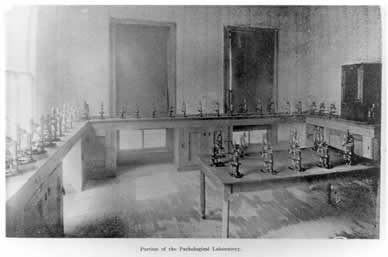
It was only when full-time faculty appointments were established in July 1913 and when state-appropriated funds became available that research activity began to flourish in the Medical Department. The stability of these appointments allowed faculty to carry out research in their fields.
One early researcher, faculty member, and head of the Department of Pathology and Bacteriology, Joseph D. Aronson, ran a series of experiments testing the effect of alcohol on the secretion of bile and pancreatic juices using dogs as subjects. Aronson used a building behind the old statehouse. Full-time faculty members became active researchers and investigated such problems as the toxicity of cigarette, cigar and pipe smoking, the action of drugs on the vagus center of the medulla and the bifurcation of the seventh cranial nerve. This type of early research was significant and became a top priority for the Medical Department’s quest to become an established institution.
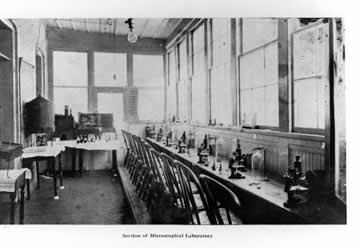
In the early 1930s, the school set to meet the criticisms from different accrediting agencies to improve faculty and stimulate scientific research. Paul Day and W.C. Langston and Billy Darby conducted a series of vitamin experiments on rats and monkeys that brought them and the school national recognition. The most important was their research on what they labeled Vitamin M (for monkey), which was a food constituent later identified as folic acid. Faculty members continued to carry on active research projects. Not all research was limited to pre-clinical faculty. Some members of the clinical faculty carried out scientific inquiries. This decade marked an important beginning towards scientific research and writing at the school.
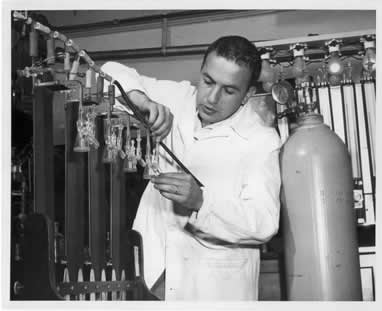
The next decade saw administration push for faculty members to be enthusiastic researchers within their disciplines or specialties. Therefore, great weight was given to experience in or potential for research activity in recruiting faculty. A research committee was formed to coordinate the scientific investigations of the entire staff, to assist in locating potential sources of research funds, and to develop avenues of publication. Arrangements were made with the Arkansas medical Society Journal, where articles written by the faculty were published. These WHAT encouraged research activity and had far-reaching consequences. An average of 45 papers a year were published between 1947 and 1952. Between 1953 and 1955, an average of 65 scholarly papers were published and received more than $650,000 in research grants.
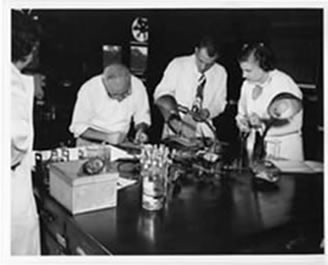
This was a turning point for what was to be a modern medical center. Administration came to believe scientific investigation was imperative and demanded faculty pursue their individual research specialties. Remarkable research and technical advancement occurred in the basic science and clinical departments, including the first open-heart surgery in Arkansas in 1957 and the discovery of a link between muscular dystrophy and the lack of Vitamin E. Dean Douglas Lawrason secured donations for the construction of a research facility with funds matched by federal funds and named in honor of the principal donor, the T.H. Barton Institute for Medical Research, completed in 1961.
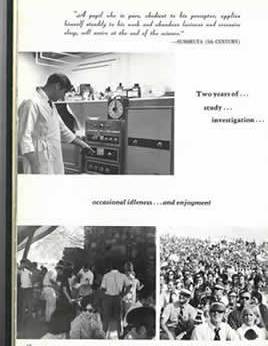
And as faculty continued to grow exponentially, the College of Medicine welcomed considerable research initiatives and expanded activity with funding from the federal government. Today, the College of Medicine and the UAMS Medical Center remains at the forefront of new medical procedures and technologies. UAMS conducts pioneering research that leads to new knowledge with application into the health care disciplines for the state and beyond.
